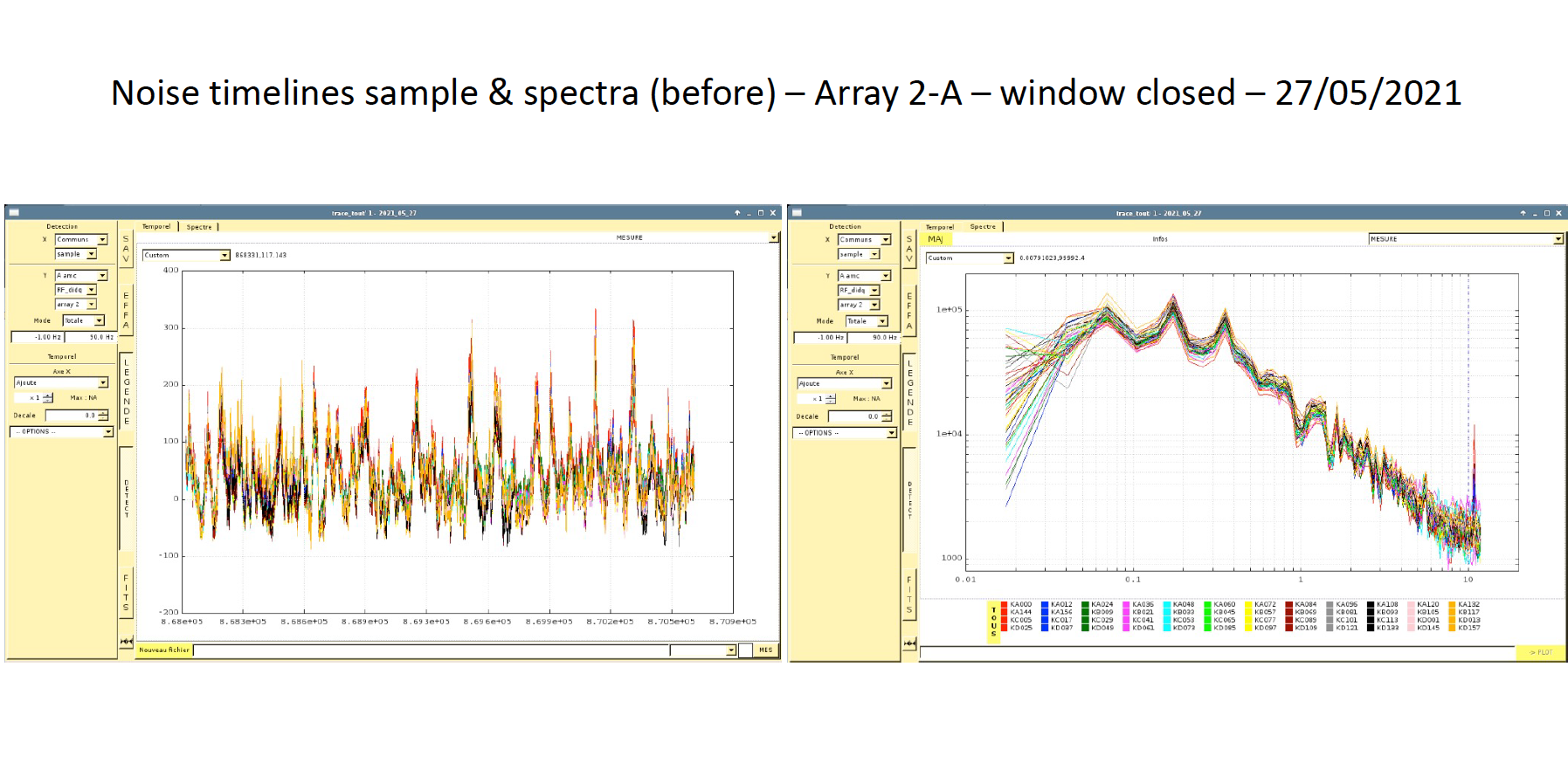NIKA2 run #53 (Jul 9, 2021)
Contents
Motivation
On past May 25th morning, we started the NIKA2 acquisition in order to start the observations of the DDT project E03-20 in the framework of a heterodyne Pool week. After that, everything went fine with pretty noise traces in all detectors, and we prepared to observe in the evening. But after lunch, we noticed that a sort of strongly correlated noise (or what was interpreted as such) between 0.05 and ~10 Hz affecting array 2. Noise traces of arrays 1 and 3 looked reasonably fine. Santiago checked that no high-frequency oscillator had been left running in the cabin (using the spectra analyser + a mobile phone), and restarted the crate, synthesizer, and preamplifier on array 2 without success. Pneumatic actuators were checked too (only for not leaving hypotheses out) and thought about possible maintenance jobs or interferences that inadvertently could have affected the instrument. On May 27th the problem still persisted. A sample of time series and noise spectra of array 2 is shown below:
After sharing some screenshots of noise traces with Alessandro Monfardini (cc. Martino Calvo) describing the situation, we agreed with him to a light intervention of the pulse tubes (PT) on the same day. With Santiago Navarro and Dave John, we spent most of yesterday getting rid of the correlated noise on this array by adjusting the PTs (finding a point where the temperature of the 4K-plate is the highest and the noise marginally better), but the traces of array 2 did not improve significantly. Previously, Santiago and Dave replaced the corresponding synthesizer without an improvement of noise traces.
Goals of the run and staff
NIKA2 tests in a technical time (T07) slot for (i) checking noise traces of array 2 and (ii) test its behaviour on the sky after correlated noise issues of past weeks. Observing in remote mode. Times referred to LT.
Observing report and results
17h00m - 21h00; Ángel: Opacity (tau[225 GHz]) above 0.7 at the beginning, going down to ~0.4 at the end of the shift. Unstable in general. First pointing and focus on Mars. Broad/distorted beams (>21" at 2mm) until ~19h. More decent focus corrections and even a bit broadened beams widths after that. Several pointing/bright sources of NIKA2 Pool catalogues observed in previous semesters under opacity conditions quite similar to the predicted ones for that date were chosen, in order to compare rms statistics. In particular, PCCS2G208.07 and M82 fields observed in W2020 and S2019, respectively, were observed during this technical time slot. PCCS2G208.07 is a Planck compact source of the newIRAM_NIKA2_1mm catalogue prepared by Bilal long ago, addressed to densify the pointing (and possibly, flux calibration) source catalogue for the instrument Users community. It’s an AGN classified as a blazar, with reported variability at least since 2016 (it can be noticed in the comparison frames too). The second one is a known nearby starburst galaxy. The rms estimation given at the top of the plots below was obtained from the statistics on a pseudo-annular background polygon limited by 60% and 80% KIDs coverage isocontours in each case, for comparison purposes. For a given source, exposure time and map geometry are the same for each epoch. It seems clear that array 2 is in good shape (as with maps at 1.15 mm):
Just at the end of this observing shift, we obtained some timelines and noise traces for each array with the window open and after close it. As shown below, traces seem to be again as expected:



